Doctor of Medicine Proves Cardiopulmonary Resuscitation (CPR) Training Oriented to Total Ergonomics Improves Physiological, Cognitive, and Productivity Indicators of First Aid Providers
Doctor of Medicine Proves Cardiopulmonary Resuscitation (CPR) Training Oriented to Total Ergonomics Improves Physiological, Cognitive, and Productivity Indicators of First Aid Providers
Held in the Postgraduate Hall on the 3rd Floor of the Postgraduate Building, Udayana University, the Doctor of Medicine Study Program, Faculty of Medicine, Udayana University, held an open doctoral promotion examination with candidate Ns. I Kadek Saputra, S.Kep, M.Erg., entitled "Implementation of Cardiopulmonary Resuscitation (CPR) Training Oriented to Total Ergonomics Optimizes Physiological, Cognitive, and Productivity Responses in Nursing Students at Udayana University." (July 30, 2025)
Cardiopulmonary resuscitation (CPR) is a lifesaving procedure performed in cases of cardiac arrest by applying pressure to the chest wall to support blood circulation and initiate a spontaneous pulse. Performing high-quality CPR requires the rescuer to exert effort in delivering chest compressions at the recommended frequency, depth, and interruptions. The rescuer's physiological response can significantly cause physical stress, mental stress, fatigue, and a high risk of musculoskeletal disorders. Healthcare workers have been trained to master the technical skills of CPR, but there is very little discussion regarding the physical and mental capabilities and the risks that arise for rescuers after performing CPR. A comprehensive approach and effort is needed to prepare the rescuer's physical abilities and psychological capacity to optimize the rescuer's physiological response, cognitive response, and productivity. When performing CPR, healthcare workers follow evidence-based technical guidelines to guide rescuers in performing quality CPR procedures to achieve optimal outcomes. However, in practice, these technical guidelines are often not implemented due to rescuer factors such as fatigue, lack of knowledge and training, limited resources, time constraints, organizational support, and environmental factors.
Body movements and muscle activity during compressions increase the cardiovascular load, as indicated by an increase in heart rate and changes in the electrocardiogram (ECG). Several studies have shown that the average pulse rate of rescuers is between 132 and 148 beats per minute, which increases significantly in the first minute of CPR. A sudden increase in pulse rate due to excessive physical exercise negatively impacts the cardiovascular system and is a factor in sudden cardiac death and acute myocardial infarction. Musculoskeletal complaints arise from excessive muscle activity during the CPR procedure. Spinal muscle activity peaks in the second minute and decreases after 5 minutes. From a CPR biomechanical perspective, the position and posture during CPR tend to be less ergonomic and are considered high-risk, requiring immediate correction. Fatigue is a physiological response experienced during and after CPR. Fatigue begins in the second minute and continues to increase as CPR time increases. After CPR is stopped, the cardiorespiratory system gradually decreases until it reaches normal limits. The pulse rate will return more quickly in individuals who participate in training programs. CPR-related training programs (CPR Training) play a crucial role in mastering CPR competency. Current training programs focus more on CPR techniques to achieve high-quality CPR and patient outcomes. Rescuer-related factors such as musculoskeletal complaints, fatigue, technical modifications to facilitate rescuers, physical strength, fitness, and other rescuer factors are rarely addressed in training.
Various efforts can be made to address the rescuer, procedures, and environment related to CPR. However, these alternative solutions are partial and have not been integrated in accordance with the complexity of factors that influence the success of CPR. A comprehensive approach is needed, considering various influencing factors and involving the participation of stakeholders involved in CPR. Total ergonomics can be implemented as an approach to address problems related to CPR procedures. Total ergonomics emphasizes systemic, holistic, interdisciplinary, and participatory (SHIP) problem-solving thinking with the application of appropriate technology (TTG). The workshop successfully identified several problems, determined objectives, and formulated and prioritized action plans. The identified problems included: learning and training programs, rescuer physical readiness, implementation, and complaints after performing CPR. Six action plans were successfully formulated and prioritized: training activities, pain and fatigue management during CPR, modification of procedures to be more ergonomic, pain and fatigue management after CPR, improvement of rescuer fitness and muscle strength, and psychological support. By considering eight ergonomic aspects and considering the readiness of appropriate technology, an implementation model package was developed in the form of an integrated CPR training program with a total ergonomics approach.
From several identified issues, the researchers limited the problems in this study to physiological responses (cardiovascular workload, fatigue, musculoskeletal complaints, recovery time), cognitive responses, and rescuer productivity. Furthermore, the training program failed to address various aspects of rescuer readiness, such as cognitive capacity (knowledge and skills), physical capacity, and social capacity. The CPR procedure was performed on a mannequin, with the rescuers being nursing student trainees.
The purpose of this study was to demonstrate that a total ergonomics approach can be implemented and provide benefits in improving rescuer capacity when performing CPR procedures. This objective was broken down into several specific objectives: demonstrating that total ergonomics-oriented CPR training improves physiological responses in the form of reduced cardiovascular workload, reduced fatigue response, reduced musculoskeletal complaints, accelerated recovery time, improved cognitive responses in the form of increased accuracy, and increased work productivity in nursing students.
The design used was a quasi-experimental design using a randomized pre- and post-test group design (treatment by subject design). The interventions provided were an educational program, a cardiorespiratory system strengthening exercise program, muscle strengthening exercises, and post-exercise management. Respondents participated in the exercise program four times a week for two weeks with a duration of 90 minutes. The study was conducted at the Nursing Laboratory of the Nursing Study Program and Nursing Professional Education, Faculty of Medicine, Udayana University, located on Jalan PB Sudirman, Denpasar. Research data collection activities were carried out from January 2025 to February 2025. Twenty-four respondents participated, selected using a simple random sampling technique. Data were processed using the Shapiro-Wilk normality test and the dependent t-test and the Wilcoxon signed-rank test with a 95% confidence level. The study has received ethical clearance from the Research Ethics Commission of the Faculty of Medicine, Udayana University.
The results of the study describe the age range of respondents as 18-20 years with the most participants (58.3%) being 19 years old. The majority of participants were female (83.3%) and are currently studying in the Undergraduate Nursing and Nursing Profession Study Program in the first and second years (58.3%). All research variable data showed improvements after the intervention, including; there was a decrease in the average pulse rate of 14.5% from 145x/minute to 124x/minute and the average cardio vascular load value decreased by 37.3% from 62.4% to 38.9%., the fatigue score decreased by 67.56% from a score of 38.79 to 12.58, musculoskeletal complaints decreased by 73.2% from a score of 27.83 to 7.46, recovery time was 46.5% faster from 23.67 minutes to 12.67, the accuracy score increased by 45.5% with an error score of 10.33 to 5.63, productivity increased by 35.2% from a score of 0.54 to 0.73 and the total number of compressions in 10 minutes of CPR increased by 13.8% from 769 times to 892 times. The results of the inference analysis showed a very significant difference in all variables with a p value = 0.001.
Improvements in all physiological, cognitive, and productivity indicators were proven to be due to total ergonomics-oriented CPR training. The training program improved rescuer knowledge and skills through educational programs, increased fitness and strengthened muscles involved in CPR through physical training programs, and provided social support from the CPR team. The total ergonomics approach embedded in this built-in research process considered eight ergonomic aspects in mapping and addressing problems: nutrition and calorie intake, posture, muscle utilization, environmental conditions, time, social conditions, information conditions, and human-machine interaction. These factors collectively and mutually influence improvements in cardiovascular load, musculoskeletal complaints, fatigue, recovery time, accuracy, and rescuer productivity.
It can be concluded that total ergonomics-oriented CPR training can improve rescuer physiological, cognitive, and productivity indicators. The resulting novelty is a total ergonomics-oriented training module and model that can be implemented in various settings related to rescuer readiness in performing CPR procedures, such as healthcare institutions (hospitals/community health centers), emergency response and evacuation institutions (SAR teams, fire departments, volunteer firefighters), health education institutions, and training institutions. This module can be used as a reference according to the curriculum and learning situation, including the development of training materials, activities, and training evaluations.
This examination was led by the Dean of the Faculty of Medicine, Udayana University, Prof. Dr. dr. Komang Januartha Putra Pinatih, M.Kes., with the following examiners:
1. Prof. Dr. dr. I Putu Gede Adiatmika, M.Kes (Promoter)
2. Prof. Dr. dr. I Made Jawi, M.Kes (Co-Promoter I)
3. Dr. dr. I Made Muliarta, S.Ked., M.Kes (Co-Promoter II)
4. Prof. Dr. Drs. I Made Sutajaya, M.Kes
5. Prof. Dr. I Made Ady Wirawan, S.Ked, MPH., Ph.D., Sp.KKLP
6. Prof. Dr. Dr. Susy Purnawati, MKK
7. Dr. dr. Luh Putu Ratna Sundari, M. Biomed
8.Dr. Dr. Dyah Kanya Wati, Sp.A(K)
9.Dr. Dr. I Putu Adiartha Griadhi, M.Fis., AIFO., S.Ked
10.Dr. Dr. Dewa Ayu Agus Sri Laksemi, M.Sc
By academic invitation:
1.Dr. I Wayan Suardana, S.Kep., Ns.M.Kep
2. dr. Agus Eka Darwinata, S.Ked., Ph.D
3.Dr. NS. Ni Ketut Guru Prapti, S.Kep., MNS
4.Dr. NS. Putu Oka Yuli Nurhesti, S.Kep., M.M., M.Kep.
5. Dr. Ns. Ni Luh Putu Inca Buntari Agustini, S.Kep., MNS
During this examination, Dr. Ns. I Kadek Saputra, S.Kep, M.Erg., was declared the 467th graduate Degree of the Doctoral Program in Medical Sciences, Faculty of Medicine, Udayana University, with a Very Satisfactory Grade.
.jpeg)
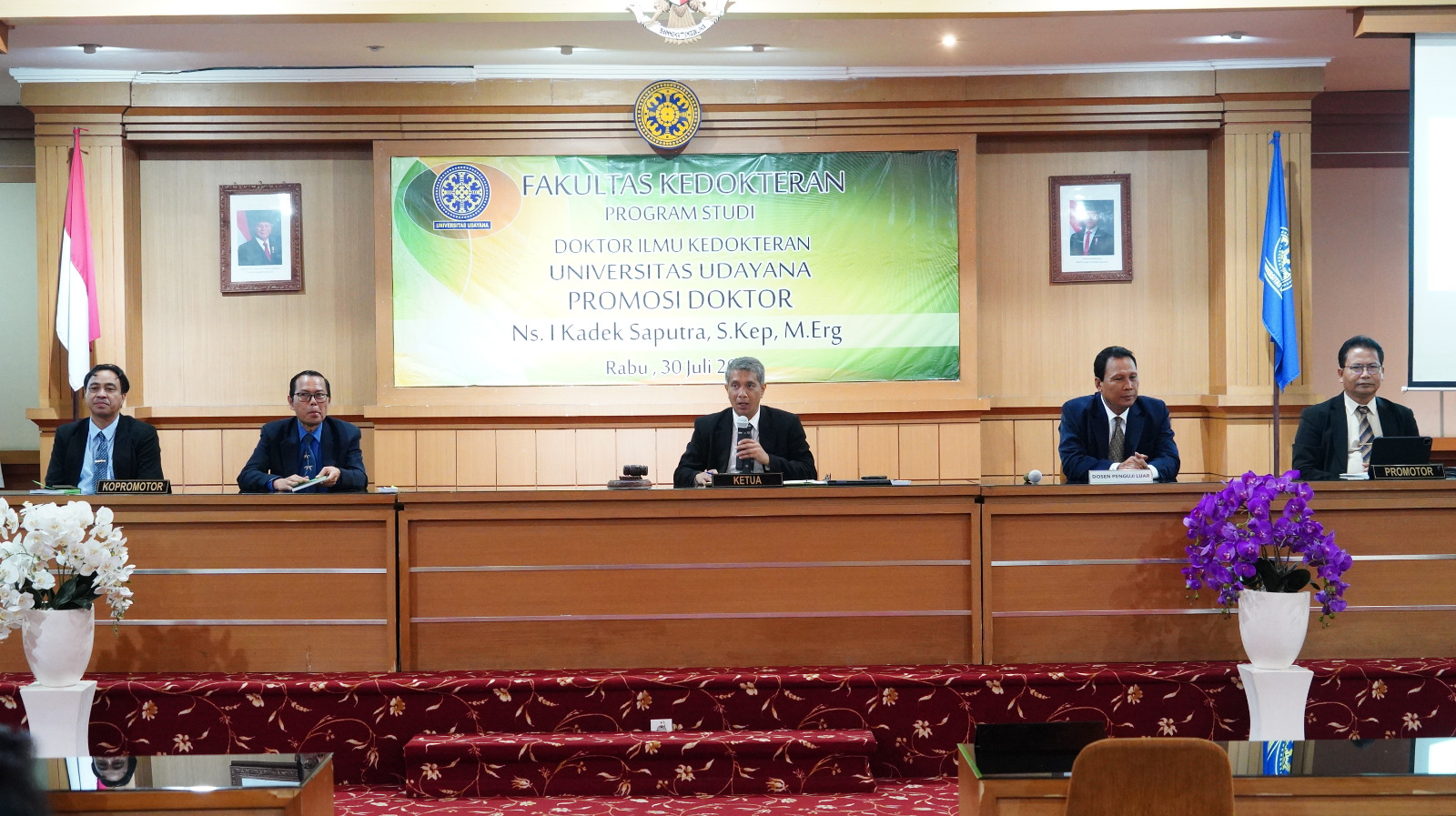
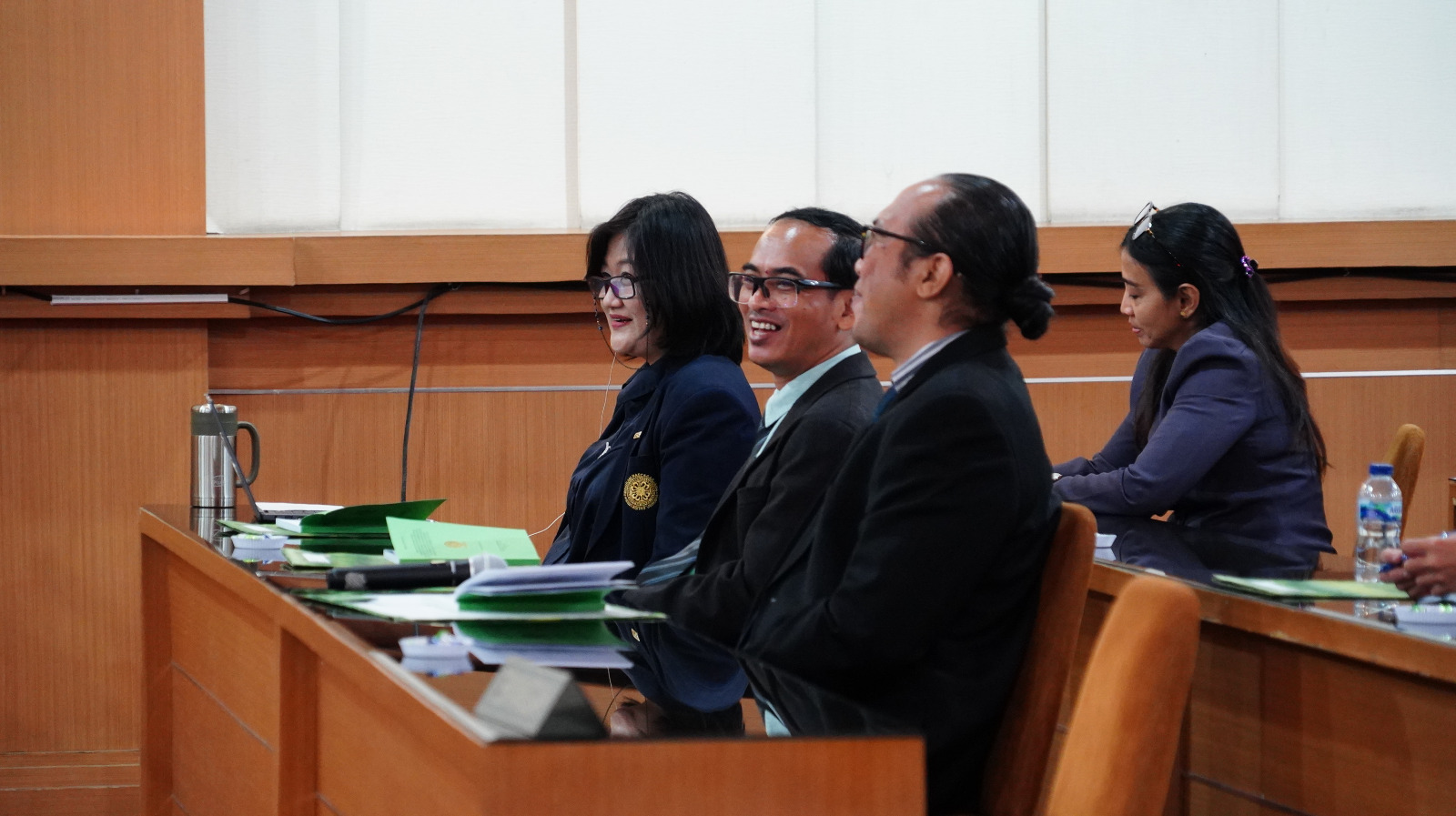
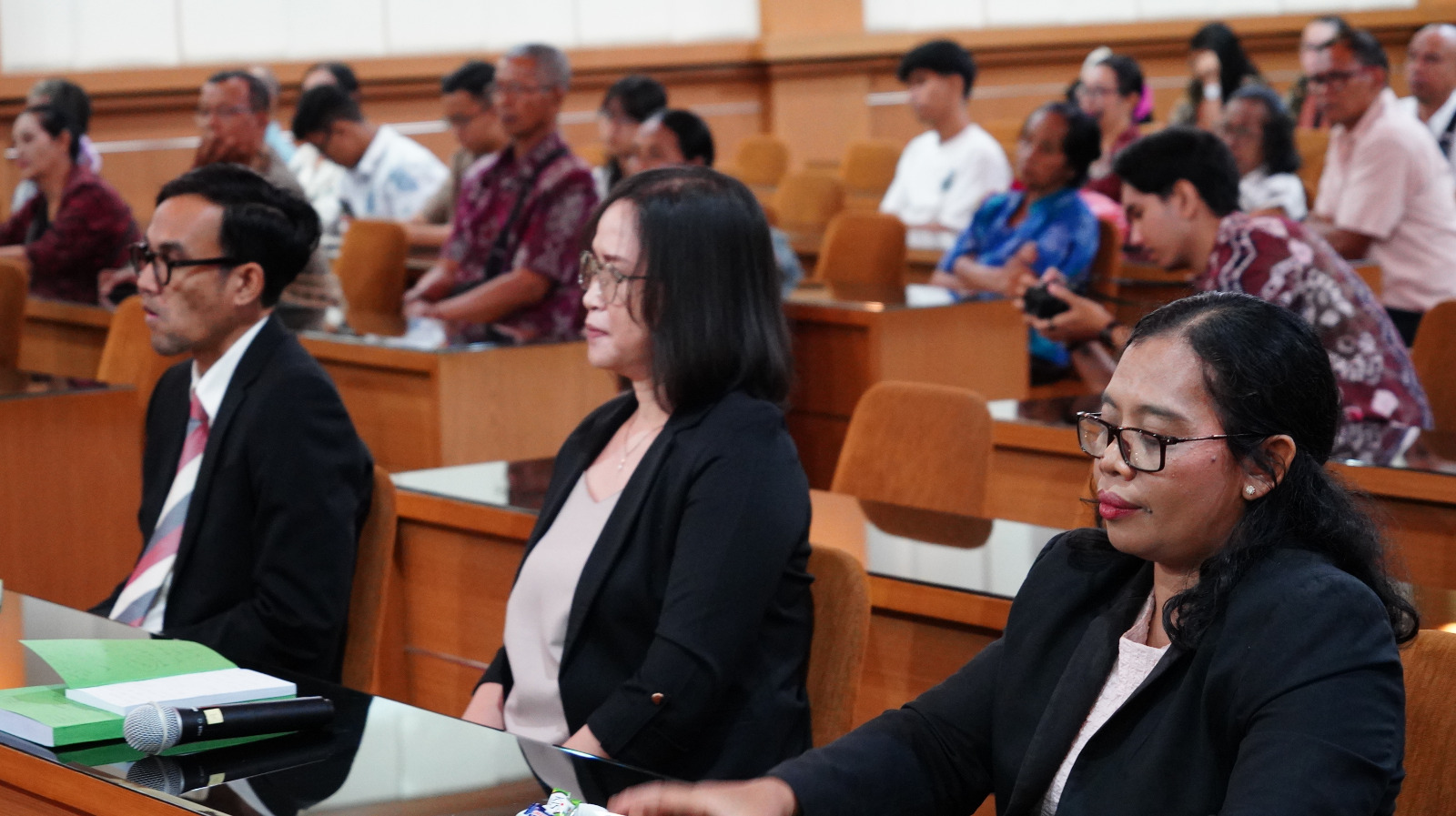


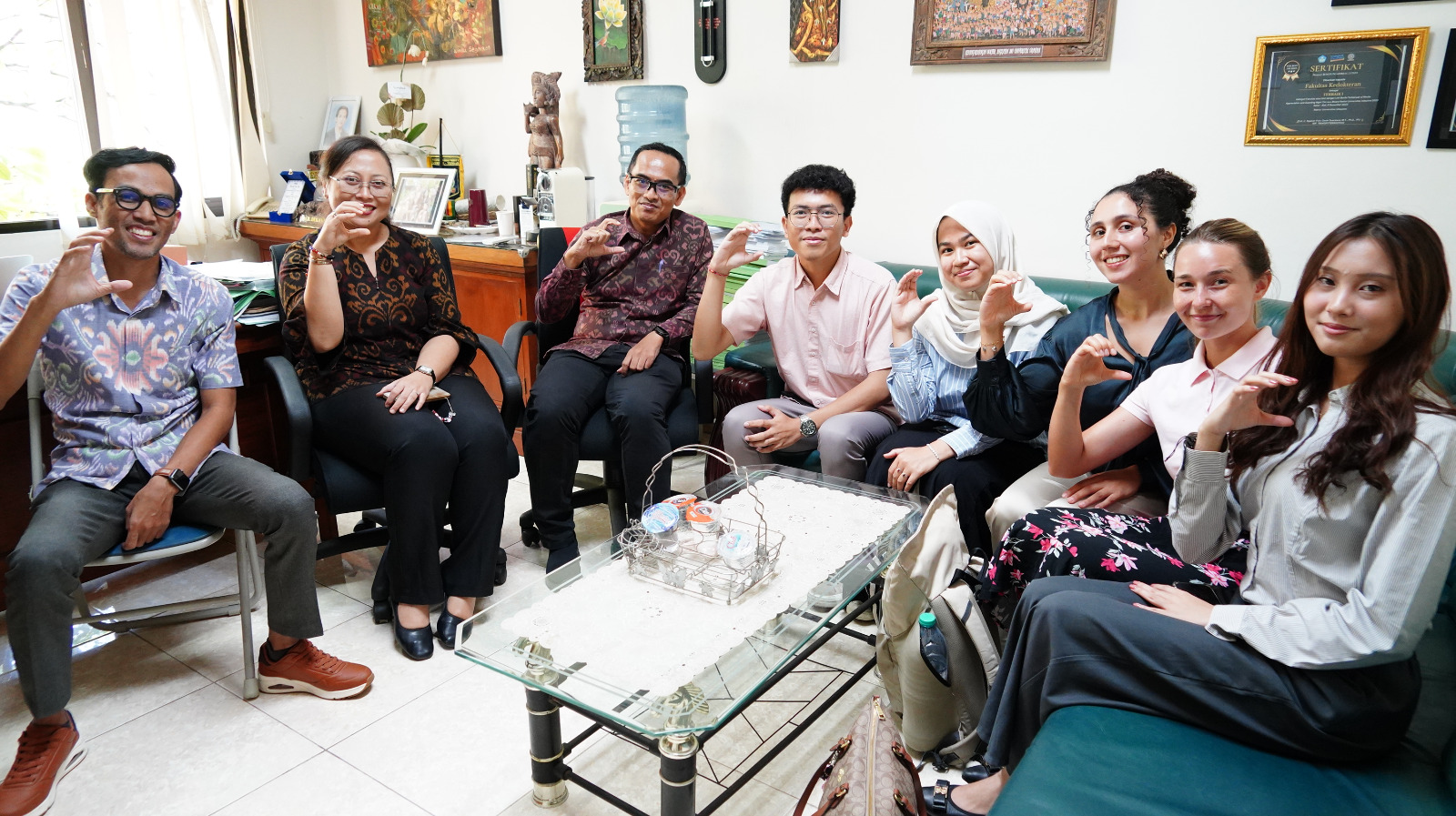
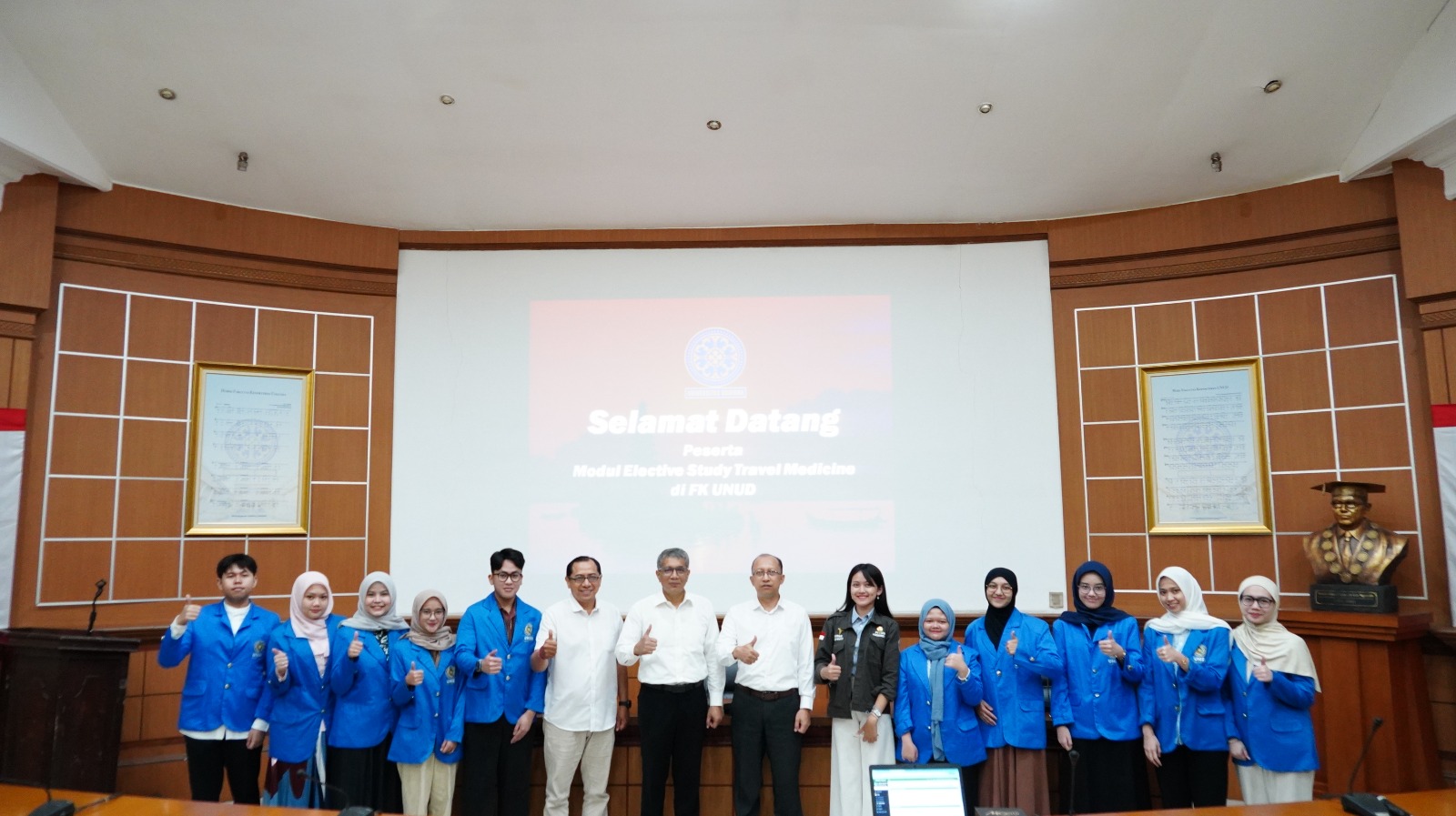

UDAYANA UNIVERSITY